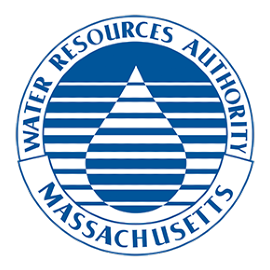Subscribe to MWRA CSO, SSO, and Blending discharge notifications
Blending
MWRA's goal is to apply three phases of treatment to all wastewater. However, in very wet weather, flow can exceed the amount that secondary treatment is designed to handle; at these times, excess primary-treated flow is diverted around the secondary process and then blended with the secondary effluent before being disinfected and discharged miles out to sea. All blended flows meet water quality limits.
In 2024 average blended flows were only 1.6% of total discharges

In communities with older, combined sewer systems that mix stormwater and sewage, blending can prevent combined sewer overflows (CSOs) polluting Boston Harbor, and the Mystic & Charles rivers. The U.S. Environmental Protection Agency confirmed this in EPA’s 1994 CSO Control Policy and the Nine Minimum Controls. All treated flow is discharged through a long outfall into Massachusetts Bay.
Public health officials recommend avoiding contact with water bodies during rainstorms and for 48 hours afterwards, as there may be increased health risks due to bacteria or other pollutants associated with urban stormwater runoff and CSO discharges. The discharge area is several miles offshore in a shipping lane, where there are no recreational swimmers or boaters. Blended discharge consists of partially treated sewage and waste. The Massachusetts Department of Environmental Protection considers primary treated wastewater to be partially treated and requires MWRA to notify regulators and the public when blending occurs.

Blending Table
Blending Discharge Details
* Review of data indicates that no blending occurred.
Previous MWRA blending events (Excel)
For more information about the 1994 CSO Policy and the Nine Minimum Controls visit https://www.epa.gov/npdes/combined-sewer-overflows-csos
